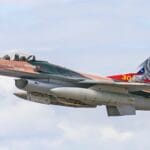Australia has entered the high-energy laser battlefield with a significant milestone: the successful demonstration of its homegrown Apollo directed energy weapon (DEW) system against drone swarms at a range of up to two miles (3.2 km). Developed by EOS Defence Systems in partnership with Australia’s Defence Science and Technology Group (DSTG), the Apollo system represents a leap forward in short-range counter-uncrewed aerial systems (C-UAS) capabilities.
Operational Context: The Growing Threat of Drone Swarms
The proliferation of low-cost drones—ranging from commercial quadcopters to military-grade FPV loitering munitions—has created an urgent need for scalable and cost-effective countermeasures. Traditional kinetic solutions like missiles or autocannons are often too expensive or slow to respond to massed aerial threats. In recent conflicts such as Ukraine and Nagorno-Karabakh, drone swarms have proven their ability to overwhelm conventional air defenses.
Directed energy weapons (DEWs), particularly high-energy lasers (HELs), offer a promising alternative by delivering speed-of-light engagement with deep magazines limited only by power supply. These systems can engage multiple targets rapidly without reloads or explosive logistics chains.
The Apollo System: Design and Capabilities
The Apollo laser weapon is a modular HEL platform designed for integration onto ground vehicles or static installations. According to EOS Defence Systems, it is capable of detecting, tracking, and engaging Class 1 UAS targets—typically under 25 kg—with precision targeting optics and beam control systems.
Key technical features include:
- Laser Power Output: Estimated between 20–30 kW class based on engagement range and target type
- Effective Range: Up to 3.2 km (2 miles) against small UAS
- Sensors: Integrated electro-optical/infrared (EO/IR) suite for autonomous tracking
- CUE Integration: Compatible with radar cueing from external SHORAD/C-RAM networks
- Platform Agnostic: Designed for vehicle-mounted or fixed-site deployment
The system was tested in Woomera Test Range under controlled conditions simulating realistic swarm attacks. Multiple drones were successfully disabled mid-flight using directed laser pulses that burned through critical control surfaces or electronics.
A Domestic MilTech Milestone for Australia
This demonstration marks one of the first publicly confirmed Australian-developed DEW systems reaching operational maturity. The project is part of Canberra’s broader push to enhance sovereign defense technology capabilities under its Defence Strategic Review and AUKUS Pillar II initiatives.
The collaboration between EOS Defence Systems—a Canberra-based defense OEM—and DSTG reflects growing emphasis on dual-use innovation pipelines within Australia’s defense-industrial base. The Apollo program reportedly received support through the Australian Government’s Sovereign Industrial Capability Priority grants aimed at bolstering advanced weapons development.
Tactical Implications for Short-Range Air Defense (SHORAD)
The Apollo system fills a critical gap in layered air defense architectures—namely low-altitude threats that evade radar coverage or saturate kinetic interceptors. When integrated with radar-based SHORAD platforms such as NASAMS or Skyguard-like systems, HELs can provide an inner-tier “last line” against drones that penetrate outer layers.
This capability is especially relevant for protecting forward operating bases, mobile command posts, ammunition depots, and civilian infrastructure during grey-zone operations where attribution may be ambiguous but drone threats remain real.
If deployed on tactical vehicles such as Bushmaster PMVs or Hawkei light protected mobility vehicles—both manufactured domestically—the Apollo could become part of expeditionary force protection packages across Indo-Pacific deployments.
Challenges Ahead: Power Supply, Weather Limits & Rules of Engagement
Despite its promise, HEL technology faces several operational constraints:
- Power Generation: Sustained firing requires robust onboard power generation or external tethering; mobile platforms must balance weight vs endurance trade-offs
- Atmospheric Attenuation: Fog, rain, dust storms degrade beam coherence; performance varies significantly with weather conditions
- Safety & Deconfliction: Use near populated areas requires strict ROE due to risk of collateral damage from misfires or reflections
Apollo’s success will depend not only on hardware but also on doctrine development around DEW employment—including training operators in beam management techniques and integrating HELs into existing C4ISR networks for target handoff and battle damage assessment.
AUKUS Synergies and Export Potential
The timing of this demonstration aligns with growing trilateral cooperation under AUKUS Pillar II—which focuses on advanced capabilities including AI-enabled ISR systems and quantum technologies. Directed energy weapons fall squarely within this scope as future force multipliers across maritime and land domains.
If validated further through field trials and operational exercises like Talisman Sabre or Pitch Black, the Apollo could attract interest from Five Eyes partners seeking interoperable C-UAS solutions. Given its modularity and potential cost-per-shot advantage over kinetic interceptors like Stinger MANPADS (~$40k per shot), it may appeal particularly to nations facing budget constraints but high drone threat exposure.
Conclusion: From Demo to Deployment?
The successful test of Australia’s Apollo laser weapon marks a pivotal step toward fielding indigenous directed energy capabilities tailored for modern asymmetric threats like drone swarms. While challenges remain around power logistics and environmental robustness, the system demonstrates clear potential as part of next-generation SHORAD ecosystems.
If integrated into broader force structures alongside radar cueing assets and kinetic layers—as seen in Israeli Iron Beam concepts or U.S. Army DE-MSHORAD programs—the Apollo could help redefine how militaries defend against saturation attacks from above without burning through million-dollar interceptors per drone kill.









